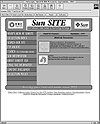
Figure 15-1 The SunSolve Online Public Patch Access Web page.
| Previous | Table of Contents | Next |
PATCH ADMINISTRATION INVOLVES INSTALLING OR REMOVING SOLARIS PATCHES FROM A running Solaris system. It may also involve removing or backing out unwanted or faulty patches.
A patch is a collection of files and directories that replaces or updates existing files and directories to facilitate proper execution of the software. The existing software is derived from a specific package format, which conforms to the Application Binary Interface. For more information about packages, see Chapter 13, &147;Package Commands.&148;
The Solaris 2.6 release bundles the following two commands for administering patches
These commands replace the installpatch and backoutpatch commands that previously shipped with each individual patch.
Detailed information about how to install and back out a patch is provided in the Install.info file that accompanies each patch. Each patch also contains a README file that contains specific information about the patch.
Before installing patches, you need to know what patches have previously been installed on the system. Table 15-1 shows commands that provide useful information about existing patches.
| Command | Description |
|---|---|
| showrev -p | Shows all patches applied to a system. |
| pkgparam pkgid PATCHLIST | Shows all patches applied to the package identified by pkgid. |
| pkgparam pkgid PATCH_INFO_patch-number | Shows the installation date and time of the host from which the package was applied. pkgid is the name of the package; for example, SUNWadmap. |
| patchadd -R client_root_path -p | Shows all patches applied to a client from the server's console. |
| patchadd -p | Shows all patches applied to a system. |
All Sun customers can access security patches and other recommended patches from the World Wide Web or via anonymous ftp. Sun customers who have purchased a service contract can access an extended set of patches and a complete database of patch information. This information is available on the World Wide Web or by anonymous ftp, and is regularly distributed on a CD-ROM. Table 15-2 summarizes customer access to patch information.
| Status | Patch Access |
|---|---|
| Sun Service customer | The SunSolve database provides access to patch information. Patches are available from the Web or by anonymous ftp. |
| Not a Sun Service customer | Customers can access a general set of security patches and other recommended patches from the Web or by anonymous ftp. |
You can access Sun patches from the World Wide Web or by anonymous ftp. If you have purchased a Sun service contract, you also can get patches from the regularly distributed patch CD-ROM.
To access patches from the Web, you need a system that is connected to the Internet and capable of running Web browsing software such as Mosaic or Netscape.
To access patches by anonymous ftp, you need a system that is connected to the Internet and capable of running an ftp program.
To access patches from the Web, use the following URL:
http://www.sun.com/

Figure 15-1 The SunSolve Online Public Patch Access Web page.
The patch database for publicly available patches is labeled Public patch access. The patch database for the comprehensive set of patches and patch information available to contract customers is labeled Contract customer patch access. You are prompted for a password to access the contract customer database.
You also can use the following URL to access publicly available patches:
http://sunsite.unc.edu/
Figure 15-2 shows the Sun Site Web page.

Figure 15-2 The Sun Site Web page.
To access patches by ftp, use the ftp command to connect to either of the following:
When ftp prompts you for a login, enter anonymous as the login name. When prompted for a password, enter your complete email address. After login is complete, you can find publicly available patches in the /pubs/patches directory.
NOTE: You must transfer patches in binary mode. To change to binary mode, at the ftp prompt, type bin and press Return.
| Previous | Table of Contents | Next |